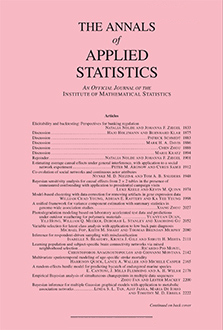Abstract
The combination of genetic information with electronic patient records promises to provide a powerful new resource for understanding human disease and its treatment. Here we develop and apply a novel stochastic compartmental model to a large dataset on Clostridium difficile infection (CDI) in three Oxfordshire hospitals over a 2.5 year period which combines genetic information on 858 confirmed cases of CDI with a database of 750,000 patient records. C. difficile is a major cause of healthcare-associated diarrhoea and is responsible for substantial mortality and morbidity, with relatively little known about its biology or its transmission epidemiology. Bayesian analysis of our model, via Markov chain Monte Carlo, provides new information about the biology of CDI, including genetic heterogeneity in infectiousness across different sequence types, and evidence for ward contamination as a significant mode of transmission, and allows inferences about the contribution of particular individuals, wards or hospitals to transmission of the bacterium, and assessment of changes in these over time following changes in hospital practice. Our work demonstrates the value of using statistical modelling and computational inference on large-scale hospital patient databases and genetic data.
Citation
Madeleine Cule. Peter Donnelly. "Stochastic modelling and inference in electronic hospital databases for the spread of infections: Clostridium difficile transmission in Oxfordshire hospitals 2007–2010." Ann. Appl. Stat. 11 (2) 655 - 679, June 2017. https://doi.org/10.1214/16-AOAS1011
Information





